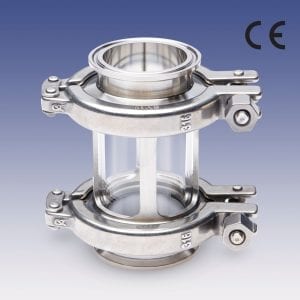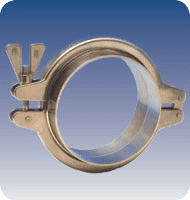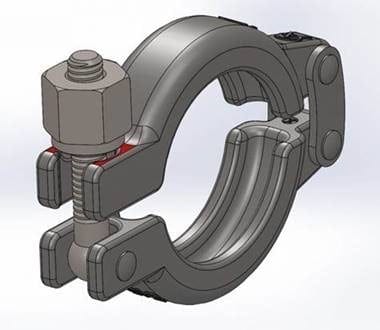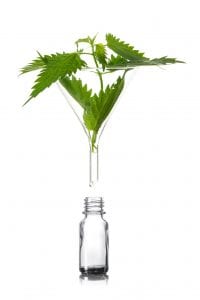A recent article in Food Processing highlighted the importance of a master sanitation schedules. Essentially this schedule serves as a “back-up” to your daily maintenance procedures but involves the periodic cleaning and care for equipment and infrastructure inaccessible to daily cleaning activities.
The article covers two essential parts of the master sanitation schedule – the creation of the schedule and validating the procedures outlined in the schedule.
Schedule Creation
The starting point of creating the schedule, according to the article, is identifying where in your process you have contamination risk. Where are parts that could become a risk, either from poor design, material composition, process requirements, or other factors? Once identified, these non-compliance risks should be analyzed, and a set of cleaning requirements determined and added to the master sanitation schedule.
Schedule Validation
The practical application of the schedule requires validation. The article lays out a method that involves disassembly to reach the parts and visual inspection prior to taking samples both before and after the outlined cleaning. In this way, possible contaminants can be identified, and the cleaning procedure’s effectiveness and frequency are ensured.
Sight Glasses – A Window Into Your Master Sanitation Schedule
It stands to reason that the more parts that are a contamination risk and not readily accessible, the longer your master sanitation schedule, and the more production time lost to accessing and cleaning those parts. However, using accessible and hygienically designed equipment can reduce the number of items that could pose a contamination risk and reduce the time and effort needed to address them in the master sanitation schedule.
LJ Star has several products that fit those criteria.
Our sanitary sight glasses let you see more parts of your process, eliminating unknown corners that could become a concern while offering improved hygienic operation. Properly installed sanitary fittings make disassembly easier to perform and are less likely to add to contamination risks. In addition, LJ Star offers flow indicators, sight windows, bubble traps, and other sanitary products designed to meet various hygienic standards, along with the documentation and traceability to ensure they are, when properly maintained, the products that match your precise specifications.
The LJ Star Resource Center has many tools to help you and your company ensure sanitary standards.
 Sanitary fittings – also called hygienic fittings – can keep your systems locked down and clean while providing a quick disconnect for faster disassembly and maintenance. However, sanitary fittings and system connections must be properly installed and maintained in order to keep your systems clean, efficient and safe.
Sanitary fittings – also called hygienic fittings – can keep your systems locked down and clean while providing a quick disconnect for faster disassembly and maintenance. However, sanitary fittings and system connections must be properly installed and maintained in order to keep your systems clean, efficient and safe.
 Sanitary fittings, also known as sanitary clamps or hygienic clamps, are clamping devices used to seal two ferrules together in a manner that meets the high hygienic standards of regulatory agencies. Often quick to install, these fittings create secure connections between your equipment without creating sites that can harbor bacteria.
Sanitary fittings, also known as sanitary clamps or hygienic clamps, are clamping devices used to seal two ferrules together in a manner that meets the high hygienic standards of regulatory agencies. Often quick to install, these fittings create secure connections between your equipment without creating sites that can harbor bacteria.
 In our efforts to continually improve our products we are introducing a change to the Domed Hexagon Nut used to tighten our range of clamps. These nuts are used to replace the Wing Nut in certain applications. The existing Domed Hexagon Nut, we currently supply, will become obsolete to be replaced by the new Hexagon Flat Nut.
In our efforts to continually improve our products we are introducing a change to the Domed Hexagon Nut used to tighten our range of clamps. These nuts are used to replace the Wing Nut in certain applications. The existing Domed Hexagon Nut, we currently supply, will become obsolete to be replaced by the new Hexagon Flat Nut.
Why Preventing Sanitary Clamp Galling Is Crucial to Product Purity
All makers of pharmaceuticals and biotechnology products have many concerns in common, but none is more critical than maintaining tight control over product purity during manufacturing and packaging. For example, if contamination were to compromise the integrity of a single batch of insulin, it could easily mean a loss of hundreds of thousands or millions of dollars in revenue to the manufacturer.
 The medicinal use of cannabis is becoming normalized in a growing number of states. Some of the products used include botanical oils. The botanical oil extraction process relies on pressure and solvents generally recognized as safe by the FDA. CO2 and hydrocarbon solvents such as butane or propane are the most common. Systems that use nButane work at relatively low pressures in the range of 80 to 150 psi. CO2 systems operate at higher pressures up to 5000 psi. Obviously, a failure at these pressures can be dangerous to workers, and natural gas products also carry the risk of fire and explosion.
The medicinal use of cannabis is becoming normalized in a growing number of states. Some of the products used include botanical oils. The botanical oil extraction process relies on pressure and solvents generally recognized as safe by the FDA. CO2 and hydrocarbon solvents such as butane or propane are the most common. Systems that use nButane work at relatively low pressures in the range of 80 to 150 psi. CO2 systems operate at higher pressures up to 5000 psi. Obviously, a failure at these pressures can be dangerous to workers, and natural gas products also carry the risk of fire and explosion.
Any plant operator can tell you that an innocent-looking set of pipes can conceal nasty secrets, some as petrifying as the monster hiding in the plumbing in a Harry Potter movie. A sight flow indicator is a good way to discover what’s lurking within.
These simple, low-cost devices provide a visual means of verifying liquid flow for direction and approximate rate, and also to observe the color and clarity of process fluids. The body of a sight flow indicator is equipped with one or more viewing windows, usually with gaskets, and a way to mount the indicator to the pipeline, such as a flanged, threaded, or sanitary clamp fitting. They are available to fit standard pipe sizes ranging from ¼-inch to 16 inches and carry ANSI pressure ratings.